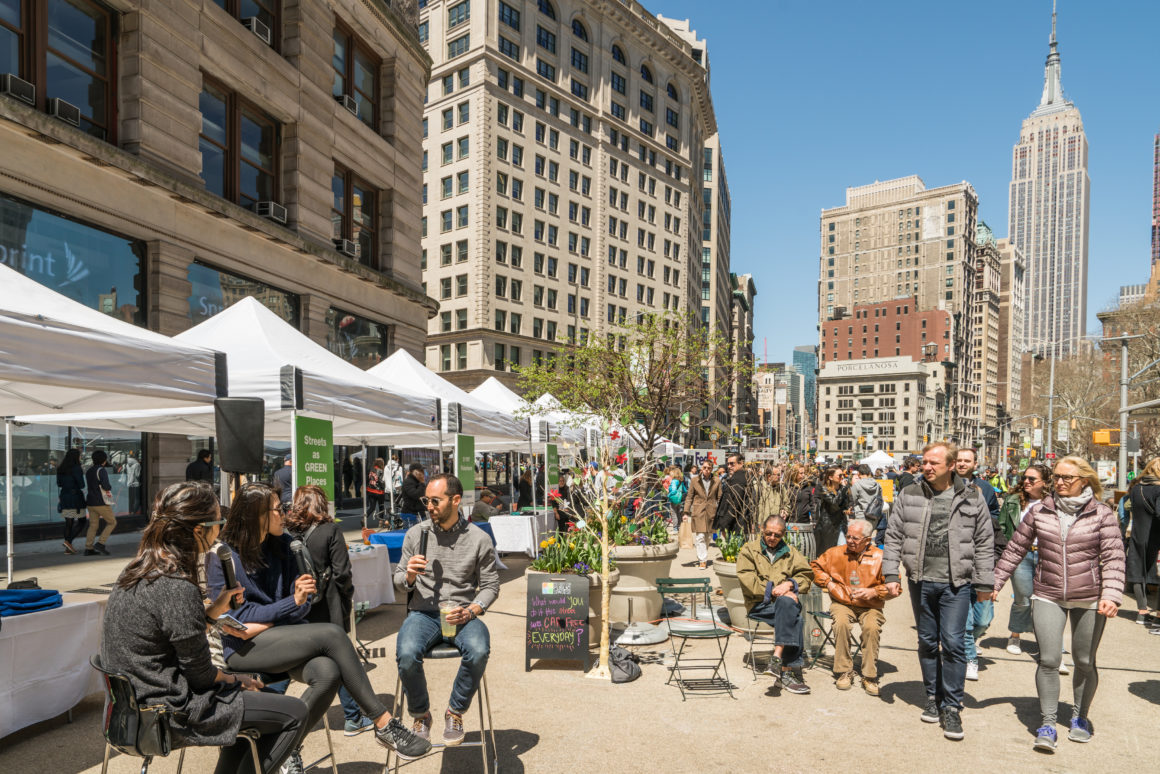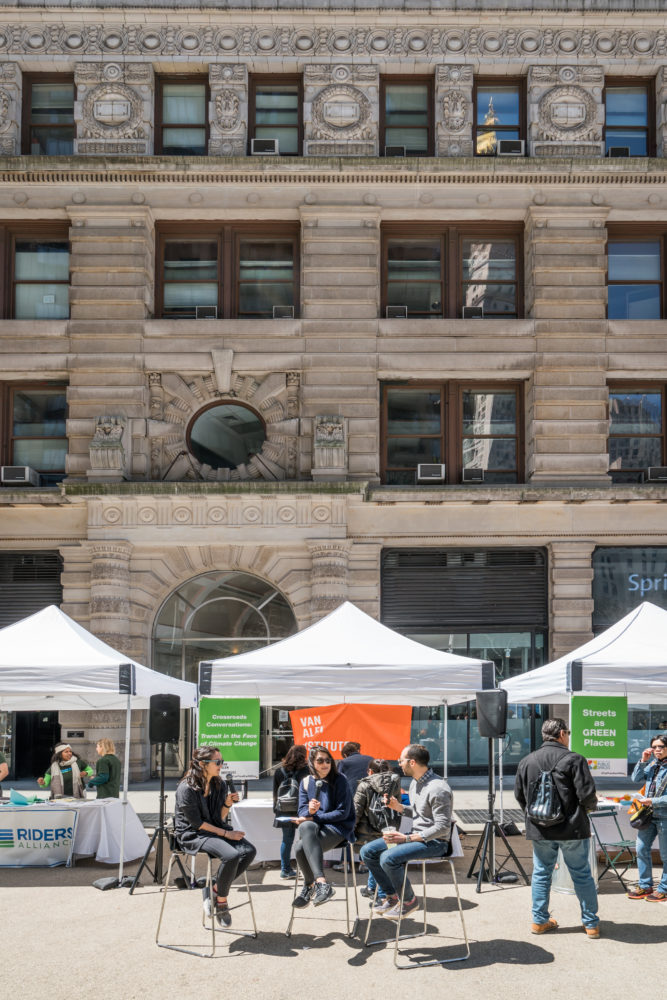
Van Alen Stories is pleased to welcome guest writer and recent Crossroads Conversations moderator Graham Cavanagh to the blog. Graham is the Senior Program Associate at the Institute for Transportation & Development Policy

On April 21, 2018, New York City celebrated Car-Free Earth Day by closing Broadway–the city’s “grid disruptor” and oldest travel route–to all vehicular traffic. People walked, rode bicycles, sat, relaxed, and chatted, enjoying the newfound space made available by banning automobiles for this brief moment in time.
On the corner of 23rd street near Flatiron Plaza, Van Alen Institute hosted their most recent Crossroads Conversations event. Crossroads Conversations are a kind of pop-up panel discussion in which passersby are invited to join in a moderated chat. In the past, Van Alen has hosted these events at high profile urban gathering spots including Times Square in New York and Randolph Square in Chicago. During this edition, strangers shared their transportation stories and experiences of Car-Free Earth Day. A variety of volunteers participated: a marathon organizer who sees streets as potential spaces for improving public health, an older woman (and her canine companion) who has been riding her bicycle in New York for over 30 years, a young man on roller blades who supports car-free streets as a means for greenhouse gas reduction, and a family from upstate who traveled to the City with a young daughter to simply enjoy walking without the danger of vehicles speeding by.
Throughout the day of discussions, it became clear that there is overwhelming public support for an increase in space dedicated to leisure activities, and less for the movement and storage of cars. Given that our streets take up a considerable amount of space in our cities, we should consider the possibility distributing that space more equitably among other modes of travel. Walking, cycling and public transit should remain the priority, as should efforts to reduce single occupancy vehicles in city centers. Citizens should have the right to choose how they move about, and our local planners and decision makers have the responsibility to provide options that are safe, affordable, and convenient for all.
By offering quality public transit along with user-friendly opportunities to walk and bike, cities can improve socioeconomic equity for citizens by easing the difficulty of commuting to jobs and services without the high costs of owning a car. Moreover, shifting away from private car use and toward sustainable modes of transport will positively affect public health, offer greater opportunities for social interaction, increase road safety, and mitigate negative environmental impact.
The Car-Free Earth Day Broadway street closure was an effective reminder of those tangible quality of life benefits. Ideally, events like Van Alen’s Crossroads Conversations will inspire the NYC Department of Transportation and Mayor de Blasio to respond to the voices of folks like those who participated in Car-Free Earth Day, accelerating the implementation of policy and development of infrastructure that lead to more equitable and sustainable means of mobility in NYC. With NYC setting the example, perhaps other cities around the world will adopt similar measures to create more space for people–and less for cars–in the urban environment.
– Graham Cavanagh